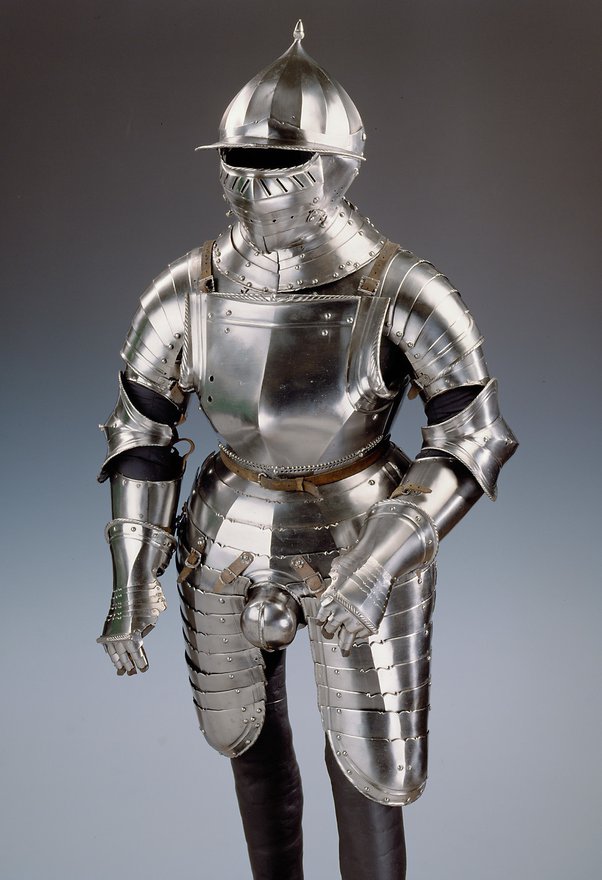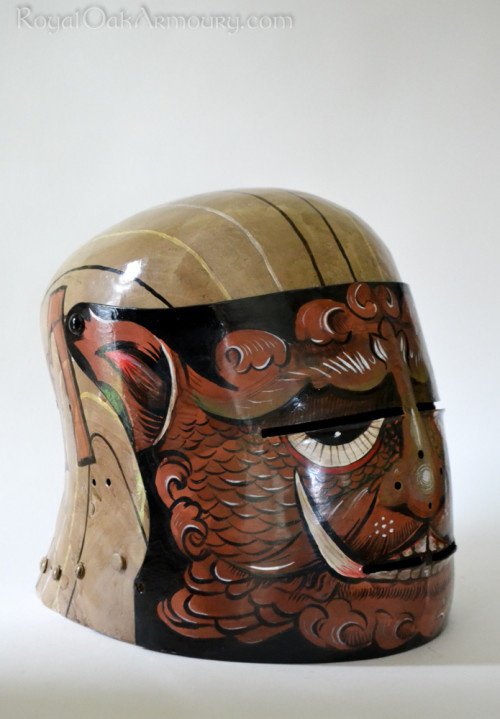One thing I inherited from my late father is a small house in Evia, an island off of Athens. When I first visited the place, it had been closed for a couple of years, with no one visiting. What struck me was how rusted everything was, including even nickel faucets and pipes.
When I mentioned this to my mother, she recalled how they had spent a couple of months there, then took my dad’s car to be serviced. The mechanic asked them if they had left the car close to the sea and was even able to tell them how my dad parked, based on the prevalence of rust on one side of the underside.
So, one has to wonder: how did knights and soldiers maintain their metal armor in the past? Surely that would rust just as fast, right?
As Eric Lowe explains, there were three main ways of looking after your armor: polishing, painting, and seasoning.
Polishing Your Armor
A really high polish (so-called “white” armor) is actually more rust-resistant than either painting or bluing. Of course, a really high polish also takes an awful lot of work … but that’s part of the point. A mirror-polished harness is proof that you take very serious care of your kit and that you have enough people working for you that you can get a mirror polish. Plus, it looks pretty intimidating when charging atop your horse.
Painting Your Armor
Men-at-arms cared a lot about the aesthetics of their armor. Not to the point of sacrificing function to form, of course, but when it came to aesthetic features that didn’t compromise function—such as what color their armor should be—yes, aesthetics were a large consideration. Painting your armor, however, was also one way to fight rust and protect your fighting kit.
Seasoning Your Armor
“Blued” armor was quite popular in some parts of the world and in some time periods: partly for aesthetics and partly because it protects the underlying steel from rust. The simplest way to season your armor was to dab a piece of cloth in oil and rub all parts that were at risk from rust.
As a general rule, painted armor was “lower-class” than either blued or white armor. Blued and white armor tended to be of roughly equal prestige value and appealed to different aesthetics.








Never had any armor but had to polish brass and shoes during my stint in the US Army. Now and then a need arises at home but the preference now is polyurethane–once the shine is intact. But for stories about the days of armor, this info should come in handy.
I, for one, am glad that those are behind us 🙂
One of those obvious things – I had never thought about maintaining armor, and now I won’t be able to forget that it’s necessary!
Maybe that’s why only a few in each army had the expensive protection – metals rust, and replacing your armor would be necessary if it was thus weakened, something not easy to do, say, on a Crusade. In addition, it probably wasn’t that light in weight.
I’ve had supposedly surgical quality stainless steel rust (nuts and bolts) – they wouldn’t have had the technology for some of the modern combinations.
To say nothing of other discomforts such as lack of ventilation!
Oh wow – I never expected surgical quality stainless steel to rust! You’re right, it must have been a nightmare to lug around and maintain!